Corporate Finance Project Report: Financial and Construction Analysis
VerifiedAdded on 2023/06/11
|6
|1070
|300
Report
AI Summary
This report provides an analysis of the stock performance of Financial Limited and Construction Limited, along with their market index. It delves into key metrics such as average return, standard deviation, coefficient of variance, correlation coefficient, standard deviation of portfolio, beta coefficient, and cost of share to evaluate the companies' performance. The average returns for Financial Limited, Construction Limited, and the market index are 1.56%, 1.56%, and 0.92%, respectively, indicating better performance of the companies compared to the index. However, the standard deviation reveals higher risk for both stocks compared to the market index, with Construction Limited exhibiting the highest risk. The correlation coefficient between Financial Limited and Construction Limited is -0.17, suggesting a potential diversification benefit in a portfolio. The portfolio standard deviation is 3.25%, indicating an average risk level. Beta coefficients for Financial Limited and Construction Limited are 0.15 and -1.24, respectively, reflecting different volatility levels relative to the market. Finally, the cost of equity is calculated using both dividend and CAPM models, showing that Financial Limited has a lower cost of equity compared to Construction Limited, making the portfolio of both companies a suitable choice for investment. Desklib provides access to similar solved assignments for students.
1 out of 6
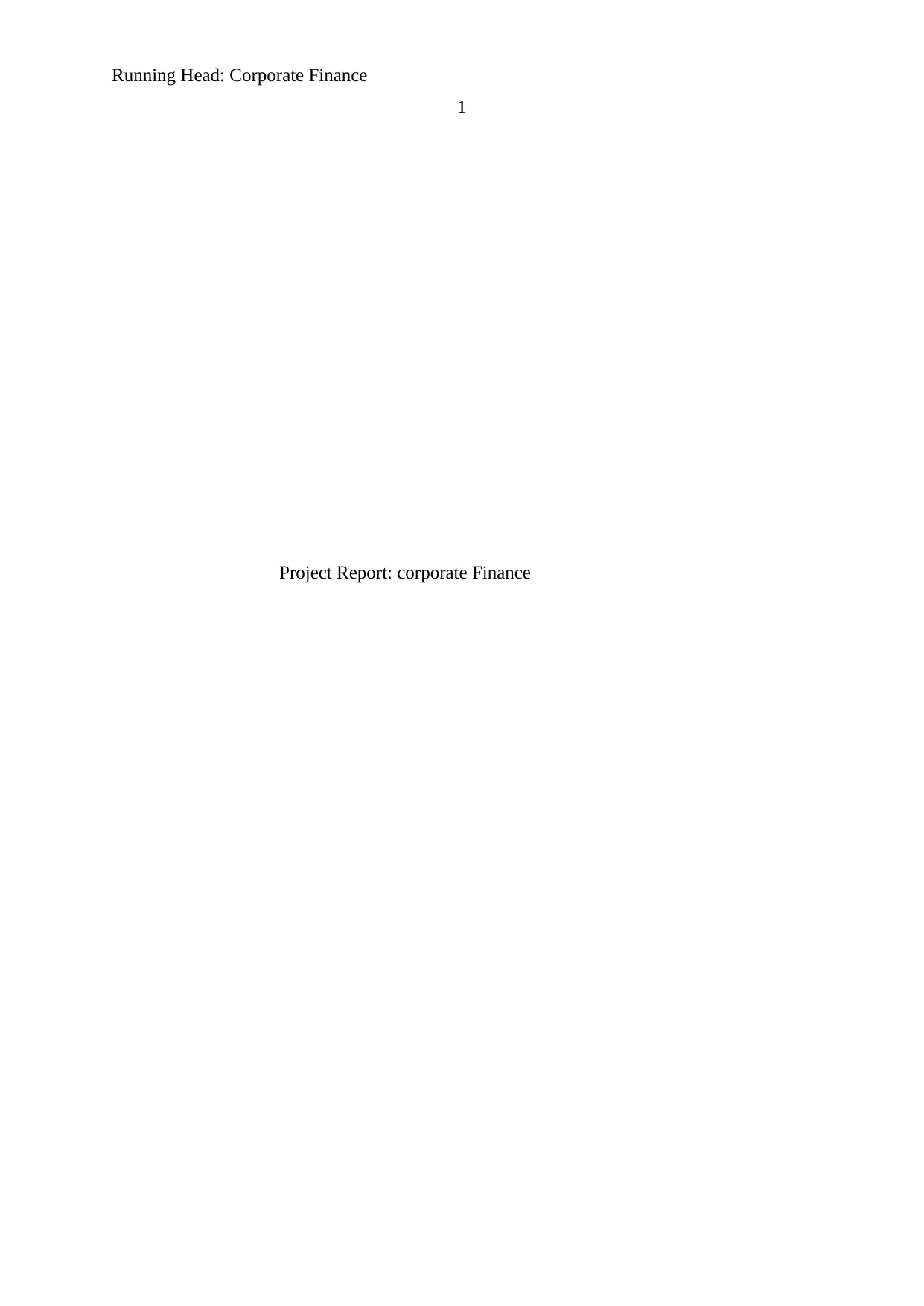
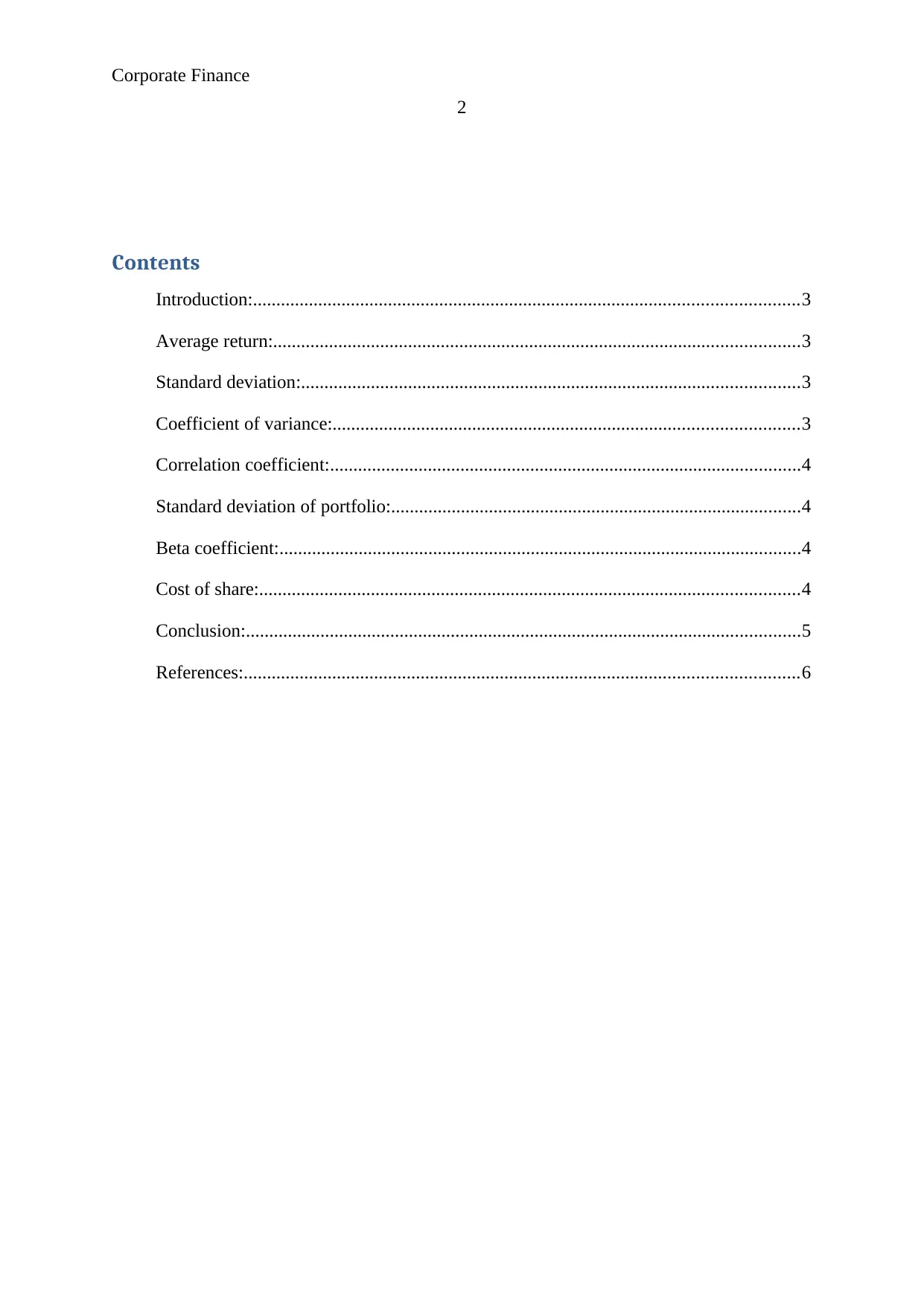
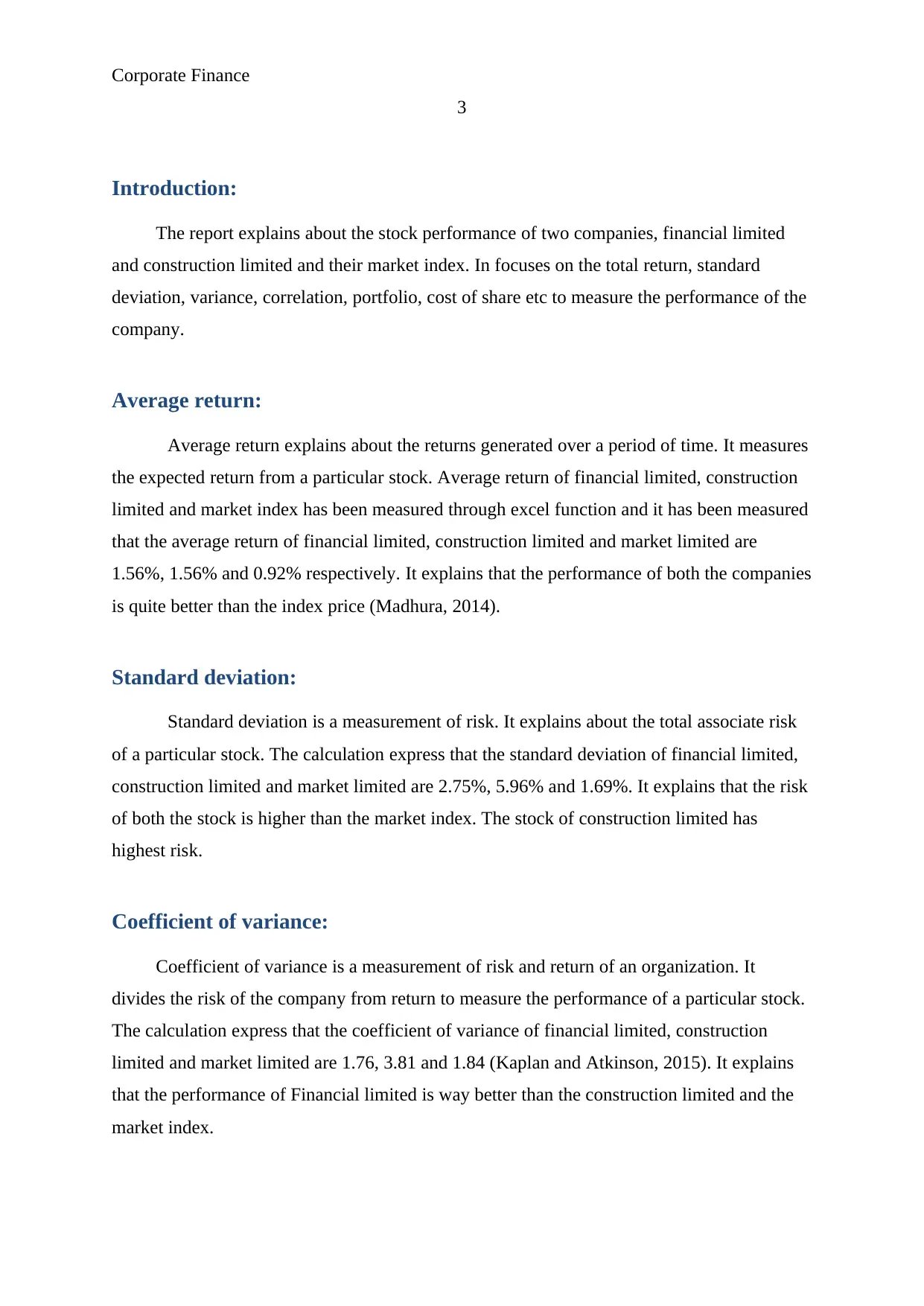

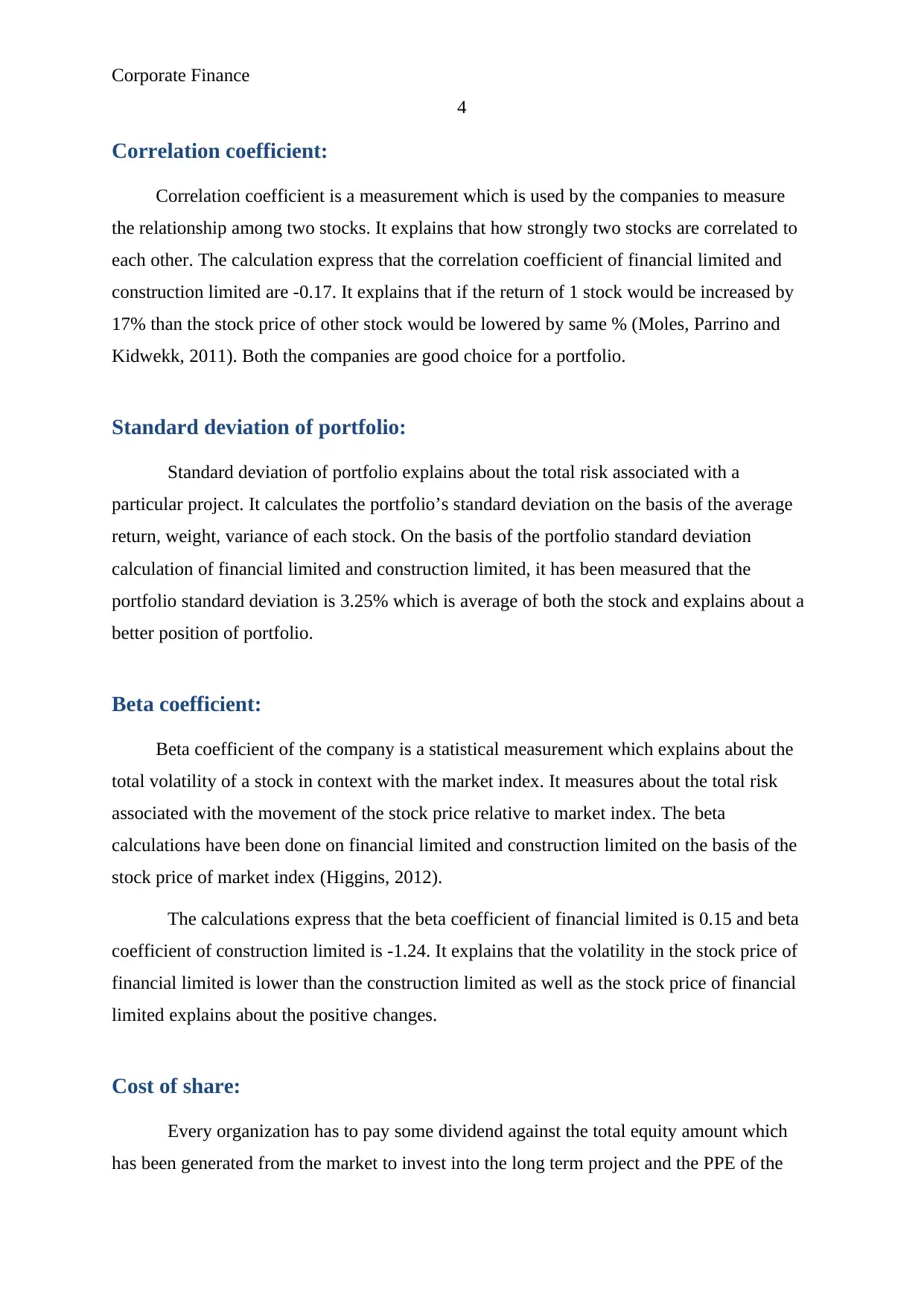
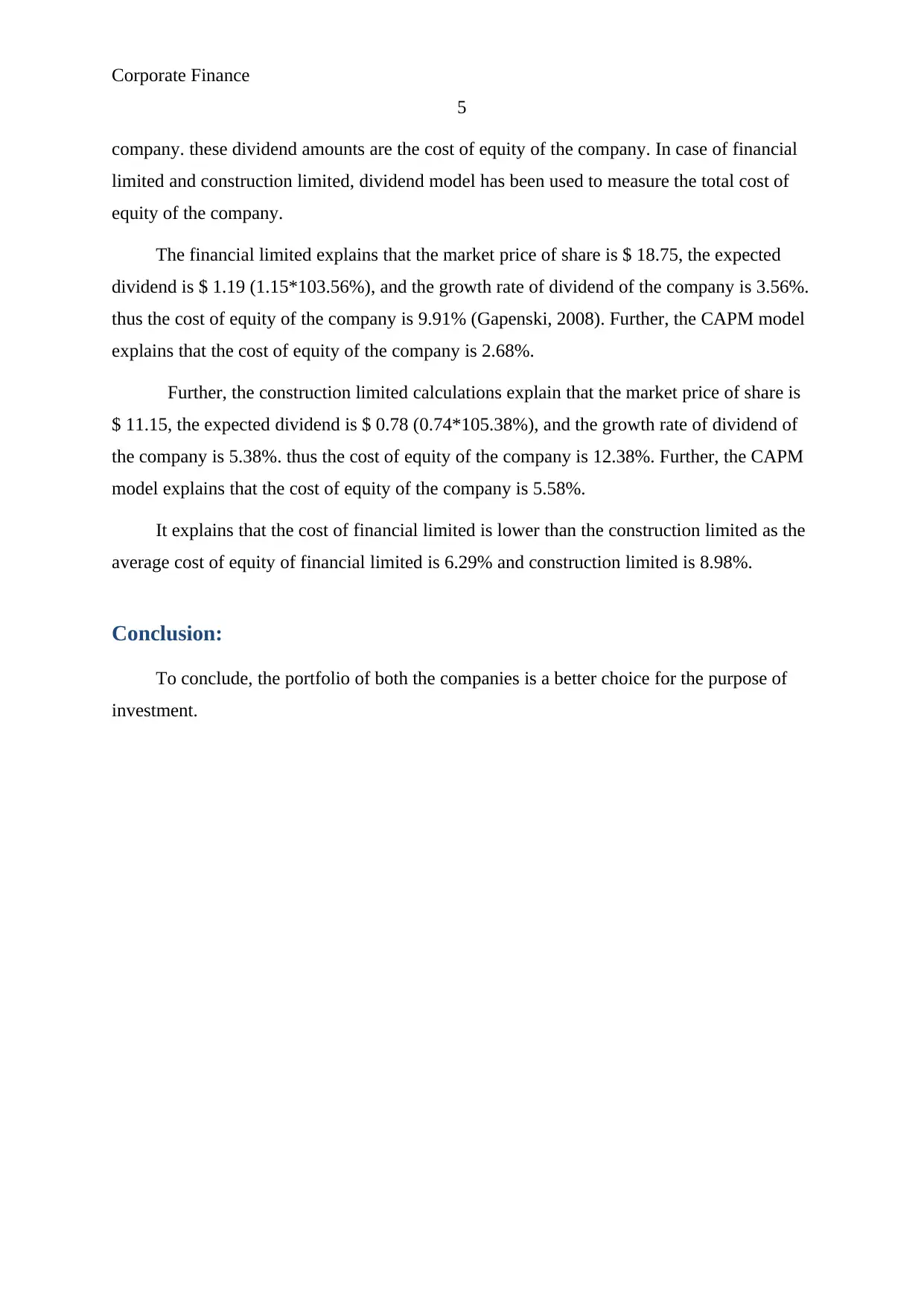
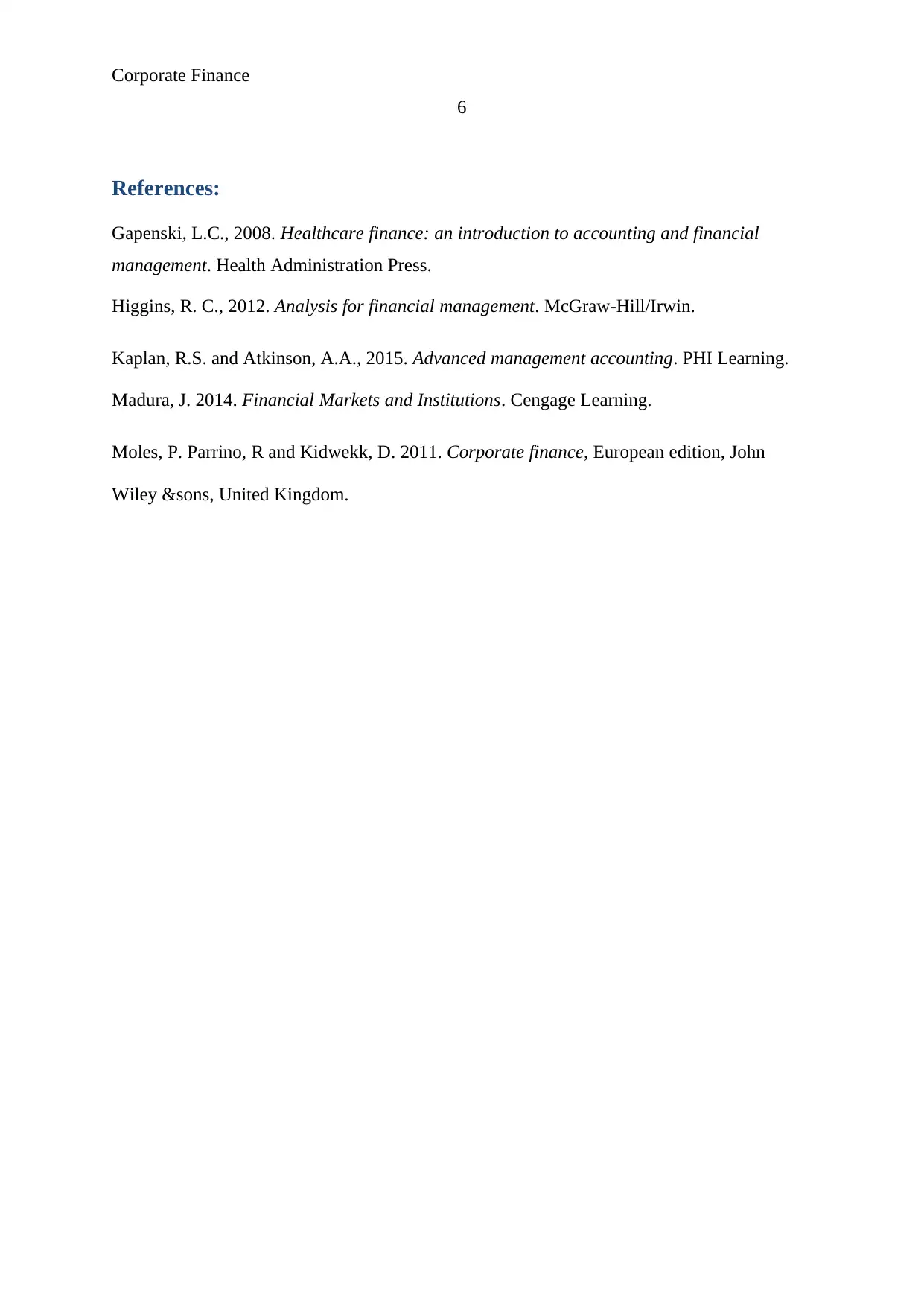




![[object Object]](/_next/static/media/star-bottom.7253800d.svg)